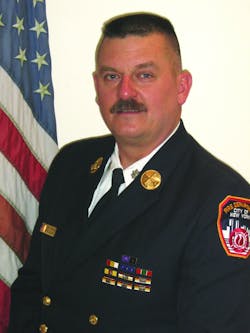I know this doesn’t sound as interesting to the typical firefighter as training on rapid intervention or roof cutting, but when conducted correctly and regularly, this training idea will enhance not only rapid intervention and roof cutting, but just about every other tactic performed at a structural fire.
I have spoken before about my friend Frank Brannigan, who said, “Know your buildings,” and we are going to look at that important concept again. This time, we are going to look at it from a training perspective. Knowing your buildings is a big job. You certainly should be out with your firefighters visiting and familiarizing yourselves with the buildings in which you may someday be called to fight a fire, but you can also turn this activity into a great training event. Let’s take a look at how we can incorporate building familiarity into a training schedule.
First, we must realize that no matter how many times fire companies tour their response areas and survey buildings, it’s not possible to get every firefighter into every building. One way to solve this dilemma is to put together a building familiarity training program. Get the word out to all of your firefighters and officers to submit the names or addresses of buildings they never want to fight a fire in. That simple first instruction will probably result in you receiving a fairly long list of such buildings. Once you put this list together, prioritize the buildings and put together a schedule of when you and an assistant can visit the buildings to do a walk-through. You should not take the company or even a group of firefighters with you on this visit. The purpose of this visit is to put together a program to be delivered to all of the firefighters at a later date.
The second step in this project is to make the visit to the building. This must, of course, be set up ahead of time so the building owner or occupant can be there and let you in. What you want to do during this visit is to collect information about the building and its occupants, contents and relation to its exposures. On a pad or card, write down all of the information you can get from the occupant and from what you can see. The information can be organized and refined later. Take pictures of each of the features or aspects of the building that could be important during a fire. Along with these photos, take pictures of every side of the building and an overall photo from across the street.
Next, set up a work session with several of your officers and firefighters and start putting together the program. Using the photos and the information you gathered, you can produce a computer-based training program that outlines each of the dangerous or unique features of a building and how you would see them when responding to that building. Show the front of the building and the entrance, and then other features such as stairways and other access points can be covered. Firefighting issues such as water supply, sprinklers, siamese locations and hydrants can also be included. Once the program is put together, it’s time for a training session.
On the selected day or evening, assemble the entire company or on-duty crew to view the program. Make the presentation in two phases. First, talk about the building itself and all of its structural features – stairways, roof access, type of construction, fire load, interior layout relative to hallways, doors and room geometry and any other unique or dangerous condition. This segment of the drill will set the stage for the second phase, the time to talk about your fire department operations at this building. During the operations segment, discuss all of the issues relating to your response and operations such as apparatus response, water supply, exposure protection, risk versus reward decision making, rescue and removal, hoseline selection, hazmat considerations, search ropes, multiple-alarm conditions, mutual aid and much more.
Another important part of the drill is the attending firefighters. They should be encouraged to be engaged and participate in the drill by asking questions, offering information and making suggestions. Sometimes during a drill such as this you will discover that one of your firefighters or officers worked at the building you are discussing. This can open up a new avenue into the building and what may be in there that you should know about.
This is not quite the last-minute drill that you think about and put together 30 minutes before the training starts. There is a considerable investment of time and effort here that may work out to be 10 hours of preparation time for a 90-minute drill. Fear not; the time was well spent and the product or drill produced can be used dozens of times with different firefighters and officers.
Chief Salka takes a candid look at news and events impacting the fire service in his blog “The Fire Scene” at http://www.firehouse.com/blogs/the-fire-scene.






